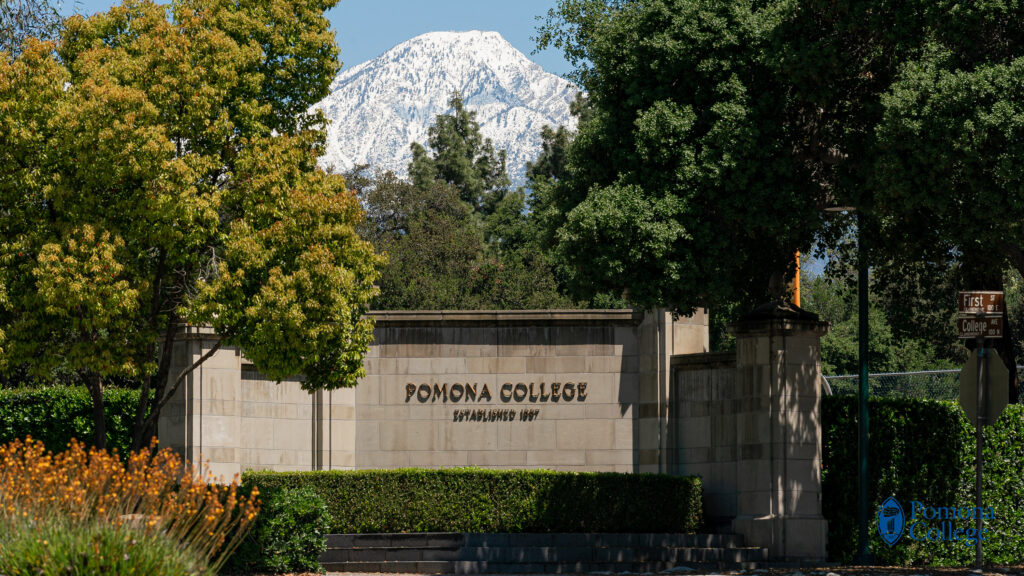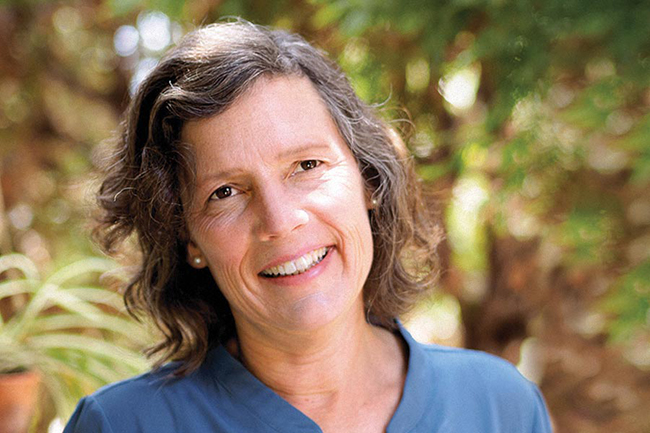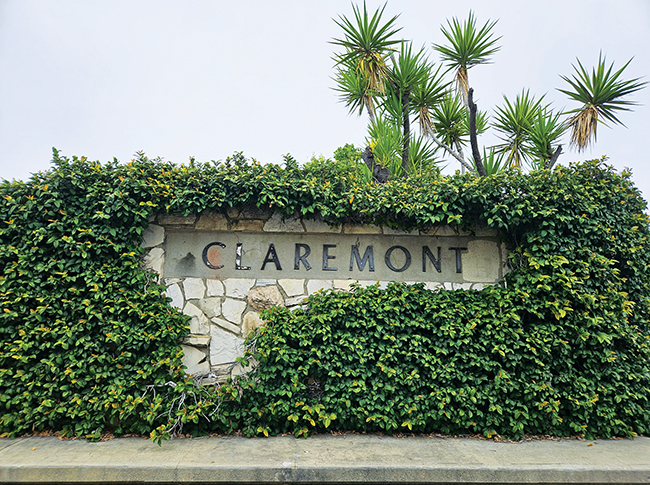Courier reporter recalls Northridge earthquake

A motorcyclist travels on a flooded Balboa Boulevard north of Rinaldi Street in Granada Hills on January 17, 1994, hours after the Northridge earthquake. Photo/courtesy of Steven Felsch
by Steven Felschundneff | steven@claremont-courier.com
Wednesday marked the 30th anniversary of a very scary morning in Southern California when, at 4:31 a.m., the magnitude 6.7 Northridge earthquake struck, killing 57 people, and causing billions of dollars in property damage.
It was not my first major earthquake, that honor goes to the 6.6 magnitude San Fernando temblor on February 9, 1971. Truth be told, while growing up in Claremont earthquakes were kind of fun, mostly because I had never personally witnessed their devastation.
That changed at 5:07 p.m. on October 17, 1989, when as a resident of San Francisco I rode out the magnitude 6.9 Loma Prieta earthquake. Fate intervened on my behalf on that clear fall day. I had recently changed jobs and moved to a new apartment, decisions that likely saved me from being directly impacted and possibly killed. My old apartment building completely collapsed, while my former job had me on Oakland’s Cypress Freeway structure around 5 p.m. most days.
In the winter of 1994 I had completed my first year as a photographer for the now long gone Oxnard Press Courier daily newspaper. We had a staff of three photojournalists and about a dozen reporters, so covering any big story, let alone spot news, required a team effort.
The morning of January 17 I was asleep in my Ventura apartment when the quake struck, knocking me out of bed. As I stood and looked out the window a daisy chain of exploding electrical transformers lit the night sky in brilliant shades of bright green.
Scanning my dark apartment I managed to locate my cameras and headed out to find the news. The radio announced the epicenter was in Northridge, so I had a general idea where to go, but a few minutes later I realized I had zero gasoline in my car. I detoured to the newspaper’s office hoping to find a reporter to team up with, but instead ran into a friend who worked in circulation. He gave me the keys to a bright blue 1986 Chevrolet Nova with the name of the newspaper painted on the sides.
There were no cell phones, and landlines were down, so communication was nonexistent. I was on my own.
In the pre-dawn hours there was scant news except the vague location of the worst destruction. Early reports put the quake at a magnitude of 7.0. That was later scaled down to 6.7. Approaching the San Fernando Valley on the 101 Freeway I saw that large sections of the road surface were displaced, forcing motorists to swerve suddenly to avoid bottoming out.

A man holding a rifle stands on the collapsed balcony of his Northridge Meadows apartment in the early hours of January 17, 1994, just after the magnitude 6.7 Northridge earthquake. Photo/courtesy of Steven Felsch
I exited at the first sign for Northridge, which turned out to be Reseda Boulevard. Little did I know that I was headed directly for the exact location where the earthquake had unleashed its worst fury.
A mile or so up Reseda there was a building with some damage and a few Los Angeles County Fire crews outside. A police officer ordered me to stop, only to wave me on a few seconds later when he spotted “Oxnard Press Courier” on the side of the car.
It was a large apartment complex, and I saw what looked like a two-story building with some minor damage. However, a closer inspection revealed it was a three-story structure that had collapsed. It was, of course, the Northridge Meadows apartments where 16 people died.
Northridge Meadows was mostly constructed with garages on the first floor, known as a “soft story” building. These structures are particularly vulnerable during a strong quake because they lack the interior walls of a typical apartment that serve to hold the building up. As a side note, my former residence in San Francisco that ended up in the middle of Beach Street also had a soft first floor.
As I was standing on the street just before sunrise there was an eerie sense of calm as the firefighters methodically assessed the damaged structure. Interestingly, I was so early on the scene of what would be the day’s biggest story that there was little to photograph. Wandering to the south I caught my first glimpse of just how bad the damage really was, and saw two men removing their possessions, or possibly looting an apartment. Just then a young man exited holding an assault rifle. News reports later that week confirmed the two were not criminals, but residents of Northridge Meadows.
Returning to the street, I found the calm had vanished as a middle aged Asian woman was frantically gesturing to a corner of the building and the collapsed first floor apartment where her son was likely sleeping at the time of the quake. Sadly, he was one of the people who did not survive.
The scene inside the central courtyard was surreal, with many people still in shock wandering among the crumpled walls in their pajamas. Despite the constant threat of aftershocks, of which there were two that day, firefighters were crawling under the remaining floors into any cavity where a survivor might be found.
At this point the news media had begun to descend, and the mood was getting ugly, so for better or worse I decided to head out. A short distance away, a scene unfolded that looked straight out of a Hollywood action film — a street flooded by a broken water main also happened to be on fire due to a ruptured gas line.
I spent the rest of the day scouting out other hot spots, pancaked parking garages, a crumbled hospital, and street after street with wide open fissures. Asking other journalists what they had seen I inevitably heard, “Have you checked out Northridge Meadows?”
Heading back before deadline, I came upon another surreal scene where a freight train had derailed with boxcars strewn aside like cordwood. But the authorities were nowhere to be found because dealing with a wrecked train could wait when people were still at risk.
Back at the paper I was confronted by my very angry editor who demanded to know why I had gone to Los Angeles County when there was significant damage in Ventura County. She also wanted to know what I was thinking when I took the company car.
Fortunately, the other two photographers had great shots from Fillmore and other Ventura County locales, and we put together a great edition for our readers.
Six months later, on June 16, 1994, the Press Courier published its last paper.









0 Comments